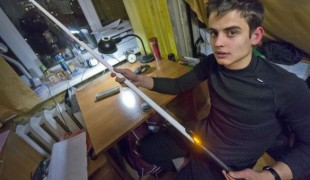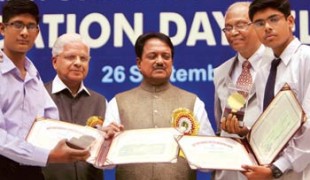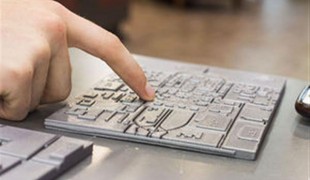- 5360
- 295
- 9
- 6
- 0
- Help Ukraine
About the solution
Why Sounds and Not Words?
There are 2 reasons. First, if it used words, it will be useless for people who have always been blind, colour will just represent a word. Whereas by using sounds, the person can generate an idea of how the "colour" is, as they have the concept in their minds, no matter if they haven't ever seen them.
The other reason is the cost. One of the main reasons why I worked on making my device cheap is because otherwise most of the blind people may not be able to acces to it. Voice synthesizers cost over 70 USD, while buzzer speakers cost cents of dollar.
Working principle:
The device has a sensor wich hundreds of nano-photodiodes with light colour filters (red, green and blue), it has a light wich illuminates the object to sense, and the light wiht the colour information comes back to the sensor. This photodiodes generate an electric current for each color, the more colour, the higher current. An Arduino Board detects those currents and saves a digital value for each colour. Then, the software compares each value and determines the sensed colur (e.g. if red is higher than blue and green, then the colour is red; if the average of red and green is higher than blue, the colour is yellow).
Finally, it generates a sound corresponding to the colour. All this happens in a few milliseconds when the blind presses the button, giving and instant and accurate result.
Future:
Currently I am working on three characteristics:
- Size. Although it fits in a jack pocket, it could be really smaller. By replacing the Arduino board with a customly made board and the 9V battery with a Li-Ion or LiPo battery, the size could be much smaller. The design I am working on with "Universidad del Comahue" (UNCO) (Comahue University), will have the size of a car key.
- Battery and Cost: By making this changes, the duration could extend up to 2 months of use (the actual design lasts a few days), and the battery could be charged by USB. Also, this will reduce the actual cost of 20 USD, to less than 10 USD.
- Recognized Colours and Accuracy: The device is able to recognize 8 colours (red, green, blue, yellow, violet, grey, black and white), the new proccessing software, wich will work with a mathematic algorythm to transform RGB values to bright, tone and contrast, will extend this quantity to 16 colours.
Application:
I have tried my device with 9 blind persons from Awkinko association, from my city, Neuquen. They all were happy of using the device, as it gaves them independence on thousands of cotidian activities such as wearing, washing clothes, painting or making artistic works, and in a future may be, recognizing bills. Nowadays, they don´t have the device in their hands because is a prototype, but I am working with UNCO for the first ready to use design.
You can see 2 videos (in spanish) of the device working here: https://www.youtube.com/watch?v=GF8A9pE8il4
https://www.youtube.com/watch?v=geEHot9ZQBs
This solution shall not include mention to the use of drugs, chemicals or biologicals (including food); invasive devices; offensive, commercial or inherently dangerous content. This solution was not medically validated. Proceed with caution! If you have any doubts, please consult with a health professional.
-
-
669
-
8
-
21049

Der sprechende Stock für Sehbehinderte
Blindness
Congenital visual acuity reduced
Neurologic visual problems NEC
Sudden visual loss
Visual disorders NEC
Visual impairment
Blindness (excl colour blindness)
Blindness congenital
Blindness cortical
Blindness hysterical
Blindness transient
Blindness traumatic
Blindness unilateral
Diabetic blindness
Eyes
Cane
Walking
-
-
-
475
-
0
-
11980

Teen invents smart stick for blind people
-
-
-
497
-
4
-
11719

Blind girl creates campus map for the visually impaired
-
 en
en